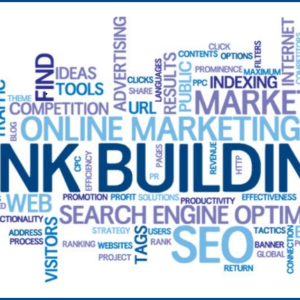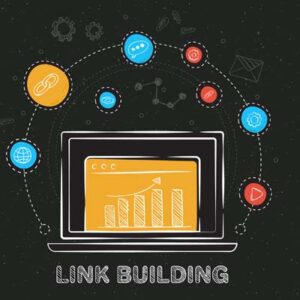Conversational AI chatbots have revolutionized the way we interact with technology, seamlessly blending human-like conversation with AI. In today’s digital landscape, these intelligent assistants serve as personalized guides, providing instant support and information across various platforms and industries at ease. From customer service to virtual assistants, conversational AI chatbots streamline processes, enhance user experiences, and redefine the way we engage with technology. Join the conversation and experience the future of interaction with conversational AI chatbots.

Rise of AI in the Digital World
The rise of AI in the digital world has transformed numerous industries and revolutionized the way businesses operate.
Here is how AI makes its presence,
- Enhanced Customer Experience: AI-powered chatbots and virtual assistants provide instant and personalized support to customers, improving response times and overall satisfaction.
- Data Analytics: AI or AI integrated module analyzes vast amounts of data to uncover patterns, trends, and insights that human analysts might overlook. This enables businesses to make data-driven decisions and gain a competitive edge.
- Personalized Marketing: AI enables hyper-targeted marketing campaigns by analyzing customer data to deliver personalized recommendations, offers, and content tailored to persona behavior.
- Automation and Efficiency: AI automates repetitive tasks and processes, freeing up human resources for more strategic and creative endeavors. This includes automating routine administrative tasks, customer service inquiries, and even aspects of content creation.
- Improved Productivity and Innovation: AI tools assist developers and designers in various fields by accelerating innovation, optimizing workflows, and enabling experimentation in areas such as product design and creative content generation.
The integration of AI into the digital world is driving unprecedented levels of efficiency, productivity, and innovation across industries, with far-reaching implications for businesses and consumers.
After the introduction of ChatGPT, the buzz among internet enthusiasts is how to interact with this AI tool.
The answer is so simple. You can interact with these AI tools as if you’re having a conversation with a friend. The great thing about this AI tool is that you can communicate with it continuously about your project or your needs. You don’t need to give an introduction or anything of the sort at each session.
However, we need some additional assistance, such as prompts, to fulfill all our requirements effortlessly and more effectively. That’s what we’ll be covering below.
ChatGPT Assists Across:
ChatGPT helps in many ways to 10X your productivity in various sectors such as,
- Content Writing
- Cold DM and Email
- Instagram Story Ideas
- YouTube Video Ideas
- Facebook Ads Suggestion
- Twitter Thread Ideas
- Coding
- Recipes
- Health
- Copywriting Frameworks
- Fun
- Growth Hacking
- Email Marketing
- Copy Writing
Okay, let’s come to our topic, how does AI assist in Content Creation?
AI aids in Content Creation in various ways,
- Efficiency
- Enhanced Creativity
- Analyze Keywords & Suggest SEO Optimization
- Suggest Personalized Content
- Content Curation
Let’s explore the 37 ChatGPT Prompts for Content Writing that make your content Awe.
Whether you’re a seasoned writer seeking fresh inspiration or a novice looking to enhance your skills, these prompts are your secret weapon. Join us as we explore the endless possibilities of ChatGPT prompts and unleash the power of AI in your content creation journey.
It might be interesting to read Content Optimization: Everything You Need to Know
ChatGPT Prompts for Blog Writing:
- “I’m looking for a [type of blog post] that will engage my [ideal customer persona] with a unique and compelling perspective on [subject] and persuade them to take [desired action] on my [website/product].”
- “I need a [type of blog post] that will provide valuable and relevant information to my [ideal customer persona] and persuade them to take [desired action] on my [website/product].”
- “I’m looking for a [type of blog post] that will educate my [ideal customer persona] on a specific [topic] and persuade them to take [desired action] on my [website/product].”
- “I need a [type of blog post] that will speak directly to the needs and pain points of my [ideal customer persona] and persuade them to take [desired action] with a sense of urgency and strong offer.”
- “I’m looking for a [type of blog post] that will showcase the value and benefits of my [product/service] to [ideal customer persona] and convince them to take [desired action] with social proof and credibility-building elements.”
- “I need a [type of blog post] that will tell a story about my [product/service] and how it has helped [ideal customer persona] achieve their [goal] in a relatable and engaging way.”
- “I need a [type of blog post] that will tell a story about my [product/service] and how it has helped [ideal customer persona] achieve their [goal] in a relatable and engaging way.”
- “I’m looking for a [type of blog post] that will draw in my [ideal customer persona] with a strong headline and hook, and then convince them to take [desired action] with persuasive language and compelling evidence.”
- “I need a [type of blog post] that will address the pain points and needs of my [ideal customer persona] and show them how my [product/service] is the solution they’ve been searching for.”
- “I’m looking for a [type of blog post] that will clearly explain the features and benefits of my [product/service] to [ideal customer persona] and persuade them to purchase with a strong call-to-action.”
- “I need a [type of blog post] that will overcome objections and concerns my [ideal customer persona] may have about my [product/service] and convince them to take [desired action].”
- “I’m looking for a [type of blog post] that will showcase the unique features and benefits of my [product/service] to [ideal customer persona] and persuade them to make a purchase.”
- “I need a [type of blog post] that will make my [ideal customer persona] feel [emotion] about my [product/service] and persuade them to take [desired action] with a sense of urgency.”
- “I’m looking for a [type of blog post] that will establish trust and credibility with my [ideal customer persona] by highlighting the successes and testimonials of previous customers who have used my [product/service].”
- “I need a [type of blog post] that will convince my [ideal customer persona] to purchase my [product/service] by highlighting its unique benefits and addressing any potential objections.”
- “I’m looking for a [type of blog post] that will speak directly to my [ideal customer persona] and persuade them to take [desired action] on my [website/product].”
ChatGPT Prompts for Content Writing:
- “Using the ‘Situation-Complication-Resolution’ framework, please write a marketing campaign outline that presents a [situation] faced by [ideal customer persona], discusses the [complication] that arises from the situation, and presents our [product/service] as the [resolution] to the problem. End with a call to action that encourages the reader to take advantage of the solution.”
- “Using the ‘Emotional Value Proposition’ framework, please write a marketing campaign outline that speaks to the [emotional needs] of [ideal customer persona] and presents our [product/service] as the solution that will fulfill those needs. Identify the [desired emotion], create a [story] that evokes that emotion, and include [testimonials] from customers who have experienced that emotion after using our product.”
- “Write a marketing campaign outline using the ‘Customer Journey Map’ framework that visualizes the journey from [awareness] to [conversion] for [ideal customer persona] and creates content that aligns with each stage. Identify their [pain points] and present our [product/service] as a solution to those issues, highlighting the [features] and [benefits] of our product and explaining how it can [improve their situation].”
- “Using the ‘Marketing Funnel’ framework, please write a marketing campaign outline that targets [awareness/consideration/conversion] stage of the customer journey and aligns with the goals of each stage. Highlight the [features] of our [product/service] and explain how it can [solve a problem] or [achieve a goal] for [ideal customer persona].”
- “Write a marketing campaign outline using the ‘Empathy Map’ framework to understand the thoughts, feelings, and needs of [ideal customer persona]. Identify their pain points and create content that speaks to those issues, addressing their [thoughts], [feelings], and [needs] with our [product/service].”
- “Using the ‘SCAMPER’ framework, please write a marketing campaign outline that suggests creative ways to [substitute/combine/adapt/modify/put to other uses/eliminate/rearrange] our [product/service] in order to make it more appealing to [ideal customer persona].”
- “Using the ‘Product-Market Fit’ framework, please write a marketing campaign outline that demonstrates how our [product/service] is a perfect fit for the needs and pain points of [ideal customer persona]. Identify the specific problems faced by the target market, explain how our product addresses these issues, and provide evidence or testimonials to back up our claims. Emphasize the benefits of using our product and how it can improve the reader’s life or business.”
- “Write a marketing campaign outline using the ‘Storyboard’ framework to outline the key elements of a [story] about our [product/service]. Include the [protagonist], [conflict], and [resolution] and use these elements to create a compelling narrative that resonates with [ideal customer persona].”
- “Using the ‘Myth-Busting’ framework, please write a marketing campaign outline that identifies and debunks common misconceptions or myths about our [product/service]. Provide [facts] and [evidence] to support your claims.”
- “Write a marketing campaign outline using the ‘Storytelling’ framework to create a narrative around our [product/service]. Use [characters], [plot], and [setting] to engage [ideal customer persona] and build emotional connections.”
- “Using the ‘Case Study’ framework, please write a marketing campaign outline that presents a real-life example of how our [product/service] has successfully solved a [problem] or achieved a [goal] for a specific [customer]. Include details on the [challenges] faced by the customer and how our product provided a [solution].”
- “Write a marketing campaign outline using the ‘Question-Answer’ framework to start with a [question] relevant to [ideal customer persona] and provide a thorough and informative answer. Explain the importance of the question and why it matters to the reader.”
- “Using the ‘Compare-Contrast’ framework, please write a marketing campaign outline that compares and contrasts two or more options or ideas to help [ideal customer persona] make an informed decision. Explain the pros and cons of each option and provide examples to support your points.”
- “Write a marketing campaign outline using the ‘How-To’ framework to provide step-by-step instructions on how to complete a specific [task] or achieve a particular [goal] for [ideal customer persona]. Include clear and concise steps and any necessary resources or tools.”
- “Using the ‘Problem-Solution’ framework, please write a marketing campaign outline that identifies a [problem] faced by [ideal customer persona] and offers a solution through our [product/service]. Explain how our product can solve their problem and improve their situation.”
- “Write a marketing campaign outline using the ‘Scannable Content’ framework to create content that is easy to scan and read quickly for [ideal customer persona]. Include clear headings, bullet points, and short paragraphs to make the content more accessible and effective.”
- “Write a [type of content] using the Rule of One framework that focuses on one main [idea], one main [message], or one main [call to action] in order to make the content more effective and memorable.”
- “Using the PESO Model, create a [type of content] that is [paid], [earned], [shared], or [owned] in order to reach a wider [audience] and increase [engagement].”
- “Write a [type of content] using the SPIN framework that uses specific, provocative, informative, and emotional [language] to create compelling content that persuades the reader to take [action].”
- “Create a [type of content] using the Inverted Pyramid framework that starts with the most important [information] and then moves on to less important [details], so that readers can quickly get the main points.”
- “Write a [type of content] using the Hero’s Journey framework that follows the journey of a [hero] from [ordinary] to [extraordinary] through [challenges] and [obstacles], ultimately achieving their [goal].”
Conclusion:
Incorporating ChatGPT prompts into your content writing arsenal can truly elevate your blog to new heights. With these 37 diverse prompts at your disposal, you have the power to engage your audience, spark creativity, and generate compelling content that resonates with readers. So go ahead, dive in, and let the magic of ChatGPT propel your blog to greatness.






